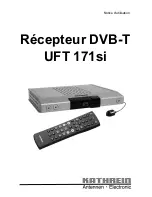
23
CL2510
RF Transceiver
AgENCY IDENTIFICATION NUmBERS
Part #
US/ FCC
Canada/ IC
CL2510-100-422
KQL-CL2510GT
2268C-CL2510GT
CL2510-100-232
KQL-CL2510
2268C-CL2510
APPROVED ANTENNA LIST
• The CL2510-100-232 and CL2510-100-422 have been designed to operate with the antennas listed below.
The required antenna impedance is 50 ohms. The customer is free to choose another vendor’s antenna of
like type and equal or lesser gain as an antenna appearing in the tables and still maintain compliance.
CL2510-100-232
Item
Part Number
Mfg.
Type
Gain (dBi)
1
ID2450-RS36
Laird Technologies
Panel
9
2
IG2450-RS36
Laird Technologies
Omni
6
3
0600-00014
Laird Technologies
Omni
2
CL2510-100-422
Item
Part Number
Mfg.
Type
Gain (dBi)
1
ANT-DB1-RMS-RPS7
Linx Technologies
Monopole
3
2
S151AH-2450S
Nearson
Omni
5
ANTENNA REqUIREmENTS
To reduce potential radio interference to other users, the antenna type and gain should be chosen so that the
equivalent isotropically radiated power (e.i.r.p.) is not more than that permitted for successful communication.
Caution:
Any changes or modifications not expressly approved by Laird Technology could void the user’s
authority to operate the equipment.
FCC/ IC REqUIREmENTS
This equipment has been approved for mobile applications where the equipment should be used at distances
greater than 20 cm from the human body. Operation at distances of less than 20 cm would require additional
RF exposure evaluation, including SAR requirement according to FCC RF Exposure guideline.
Additional information about RF exposure and compliance in Canada can be found at Industry Canada’s
website: www.ic.gc.ca
NOTE:
This equipment has been tested and found to comply with the limits for a Class B digital device,
pursuant to Part 15 of the FCC Rules. These limits are designed to provide reasonable protection against
harmful interference in a residential installation. This equipment generates, uses, and can radiate radio
frequency energy. If not installed and used in accordance with the instructions, may cause harmful
interference to radio communications. However, there is no guarantee that interference will not occur in
a particular installation. If this equipment does not cause harmful interference to radio or television reception,
which can be determined by turning the equipment off and on, the user is encouraged to try to correct the
interference by one or more of the following measures:
• Re-orient or relocate the receiving antenna
• Increase the separation between the equipment and the receiver
• Connect the equipment to an outlet on a circuit that is different from that to which the receiver is connected.
• Consult the dealer or an experienced radio/TV technician for help.
CL2510
COmPLIANCE
SECTION
Summary of Contents for ConnexLink CL2510
Page 28: ......



































